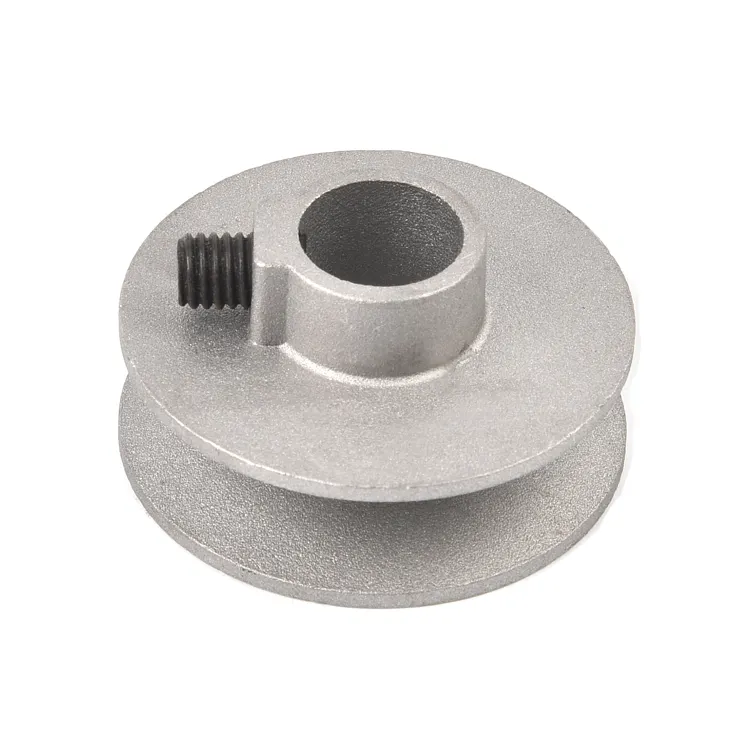Product Description
Material:Nylon and Zinc Alloy, Nylon and Zinc Alloy
Size:15mm-50mm
Finish:Nickel Plated or Customized
Packing:Gunny bag or carton and pallet / by customer requirements.
HangZhou Xinquanxi Metal Products Co.,Ltd. is a professional forging and casting parts manufacturer with more than 20 years experience with good quality and competitive price.
We are so willing to avail ourselves of opportunity establishing business relation with you.
Our main products are Rigging: turnbuckle (Jis open body, 1480 forging turnbuckle, US type forging turnbuckle,Rigging Screw), forging shackle, eye bolt and eye nut, forged hookand special customized products,, various sets of rings, D ring, master ring, snap hook,Pulley Block, etc.;
Corner code, expansion bolt, seismic support, guardrail and other building materials.
Casting pipes, manhole covers, road piles, container buttons, anchors, all kinds of breeding equipment and other casting products.
FAQ
1.Are you a factory or a trading company?
We have our own foundry and forging factory. The forging plant has 4 production lines and a history of more than 20 years;Foundry has a history of more than 30 years.
2.How do you control your quality?
1: Control during r&d at the beginning of production
2:Production process control
3:Dimensional control
4:Tensile tests
5:Quality inspection before delivery
3.Can we have our product markings on it?
Yes, we can add product markings according to your requirements.
4.How about packing?
Woven bag,carton,plywood pallet or by customer requirements.
| Material: | Zinc Alloy, Nylon |
|---|---|
| Number of sheaves: | 1,2 |
| Color: | Silver |
| Samples: |
US$ 0.2/Piece
1 Piece(Min.Order) | Order Sample |
|---|
| Customization: |
Available
| Customized Request |
|---|
.shipping-cost-tm .tm-status-off{background: none;padding:0;color: #1470cc}
| Shipping Cost:
Estimated freight per unit. |
about shipping cost and estimated delivery time. |
|---|
| Payment Method: |
|
|---|---|
|
Initial Payment Full Payment |
| Currency: | US$ |
|---|
| Return&refunds: | You can apply for a refund up to 30 days after receipt of the products. |
|---|

How do fixed pulleys contribute to the precision and control of lifting and lowering operations?
Fixed pulleys play a crucial role in enhancing the precision and control of lifting and lowering operations. By incorporating fixed pulleys into a system, several benefits can be achieved, allowing for more precise and controlled movements. Here are ways in which fixed pulleys contribute to the precision and control of lifting and lowering operations:
- Force Distribution: Fixed pulleys help distribute the applied force more evenly throughout the system. By introducing additional pulleys, the load can be divided into multiple segments, reducing the strain on individual components. This even distribution of force minimizes the risk of overload on specific parts of the system, ensuring better control and preventing premature equipment failure.
- Reduction of Friction: Fixed pulleys can reduce friction during lifting and lowering operations. The use of pulleys with low-friction materials and designs, such as ball bearings or bushings, helps to minimize resistance and improve the overall efficiency of the system. Reduced friction allows for smoother movements, enabling greater precision and control over the lifting and lowering process.
- Directional Control: Fixed pulleys enable precise directional control of the load. By changing the direction of the rope or cable through the fixed pulleys, operators can guide the load along a desired path. This directional control is particularly useful when navigating tight spaces, avoiding obstacles, or aligning the load with precision. It allows for more accurate positioning and prevents unintended movements or shifts during the lifting or lowering operation.
- Load Stabilization: Fixed pulleys contribute to load stabilization and minimize swinging or oscillation of the load. The configuration of fixed pulleys can help dampen and control the movement of the load, reducing unwanted swinging or swaying. This is especially important when handling delicate or sensitive items that require minimal disturbance or precise placement.
- Gradual Speed Control: Fixed pulleys allow for gradual speed control during lifting and lowering operations. By adjusting the tension on the rope or cable, operators can regulate the speed at which the load is raised or lowered. The mechanical advantage provided by fixed pulleys facilitates smooth and controlled movements, preventing sudden or jerky motions that could potentially damage the load or compromise safety.
- Incremental Positioning: Fixed pulleys enable incremental positioning of the load. By adjusting the tension on the rope or cable incrementally, operators can achieve precise positioning of the load at various heights or locations. This level of control is especially valuable in tasks that require accurate alignment or when working in confined spaces where fine adjustments are necessary.
- Operator Effort: Fixed pulleys reduce the amount of physical effort required from the operator during lifting and lowering operations. The mechanical advantage provided by fixed pulleys helps multiply the force applied by the operator, making it easier to control heavy loads or objects. This reduces operator fatigue, improves safety, and allows for more precise and controlled movements.
By leveraging the advantages offered by fixed pulleys, lifting and lowering operations can be performed with greater precision, improved control, and enhanced safety. The integration of fixed pulleys into lifting systems provides operators with the necessary tools to achieve accurate positioning, gradual speed control, load stabilization, and efficient force distribution, ultimately contributing to successful and controlled lifting and lowering operations.

What maintenance procedures are necessary to ensure the reliability of fixed pulleys?
Maintaining fixed pulleys is essential to ensure their reliability and longevity. Here’s a detailed explanation of the maintenance procedures necessary to keep fixed pulleys in optimal condition:
- Regular Inspection: Conduct regular visual inspections of the fixed pulleys to check for signs of wear, damage, or misalignment. Inspect the sheaves, axles, bearings, and mounting hardware for any abnormalities. Look for cracks, excessive wear, loose components, or corrosion. Early detection of issues allows for timely repairs or replacements, preventing further damage to the pulley system.
- Cleaning: Keep the fixed pulleys clean to prevent the accumulation of dirt, dust, and debris. Use a soft brush or cloth to remove any contaminants from the sheaves, axles, and bearings. Regular cleaning helps maintain smooth operation and reduces the risk of abrasive particles causing damage or increased friction.
- Lubrication: Apply lubrication to the bearings and axles of the fixed pulleys as recommended by the manufacturer. Lubrication reduces friction, minimizes wear, and ensures smooth rotation of the sheaves. Use the appropriate lubricant specified for the pulley system, and follow the recommended intervals for reapplication.
- Tension Adjustment: Check and adjust the tension of the rope or cable running through the fixed pulleys. Proper tension ensures efficient operation and prevents slippage or excessive strain on the pulley system. Follow the manufacturer’s guidelines or consult a professional for the correct tension adjustment procedure.
- Bearing Maintenance: If the fixed pulleys utilize bearings, follow the maintenance procedures specific to the type of bearings used. This may involve periodic inspection, cleaning, and re-greasing or replacing of bearings as recommended by the manufacturer. Proper bearing maintenance ensures smooth and reliable operation of the pulley system.
- Replacement of Worn Components: Over time, certain components of the fixed pulley system, such as the sheaves or bearings, may wear out and require replacement. Monitor the condition of these components and replace them with appropriate replacements when necessary. Using worn or damaged components can compromise the reliability and safety of the pulley system.
- Environmental Considerations: Take into account the environmental conditions in which the fixed pulleys operate. If the pulleys are exposed to harsh elements, such as extreme temperatures, moisture, or chemicals, additional maintenance measures may be required. This can include applying protective coatings, using corrosion-resistant materials, or implementing regular inspections and cleaning routines.
It’s important to note that the specific maintenance procedures may vary depending on the design and manufacturer recommendations of the fixed pulleys. Always refer to the manufacturer’s guidelines and documentation for maintenance instructions specific to your pulley system.
In summary, ensuring the reliability of fixed pulleys involves regular inspection, cleaning, lubrication, tension adjustment, bearing maintenance, replacement of worn components, and considering environmental factors. By following these maintenance procedures, the lifespan and performance of fixed pulleys can be maximized, reducing the risk of unexpected failures and ensuring safe and efficient operation.

What are the advantages of using fixed pulleys in various tasks?
Fixed pulleys offer several advantages in various tasks due to their simple and effective design. Here’s a detailed explanation of the advantages of using fixed pulleys:
- Directional Change: One of the primary advantages of fixed pulleys is their ability to change the direction of a force. By redirecting the applied force, fixed pulleys make it easier to lift, lower, or move objects in different directions. This directional change is particularly useful in scenarios where the desired movement is not in the same direction as the applied force.
- Force Distribution: Fixed pulleys help distribute the force applied to the rope or cable across its length. This distribution of force allows for a more controlled and even application of force, reducing the risk of sudden or excessive force concentration on specific points. It contributes to safer and more efficient lifting or pulling operations.
- Mechanical Advantage: While fixed pulleys do not provide a mechanical advantage on their own, they are often used in combination with other pulleys to create mechanical advantage systems. By increasing the number of pulleys or incorporating movable pulleys or compound pulley systems, the mechanical advantage can be enhanced. This allows users to lift or pull heavier loads with reduced effort.
- Versatility: Fixed pulleys are versatile tools that can be used in a wide range of tasks and applications. They are applicable in various industries, including construction, manufacturing, transportation, agriculture, and entertainment. Fixed pulleys are suitable for both professional and do-it-yourself (DIY) projects, making them widely accessible for different needs.
- Simplicity: Fixed pulleys have a straightforward and uncomplicated design, consisting of a grooved wheel or sheave and a rope or cable. This simplicity makes them easy to install, operate, and maintain. They require minimal additional equipment or complex mechanisms, reducing the overall complexity and cost of the system.
- Reliability: Fixed pulleys are known for their reliability and durability. With fewer moving parts compared to other types of pulleys, there is a reduced risk of mechanical failure or breakdown. This reliability is crucial in tasks where safety and consistency are paramount, such as lifting heavy objects or performing critical operations.
These advantages make fixed pulleys valuable tools in various tasks. Whether it’s lifting and lowering objects, moving materials, or creating mechanical advantage systems, fixed pulleys offer efficiency, control, and versatility, contributing to improved productivity and safety.


editor by CX
2023-12-01